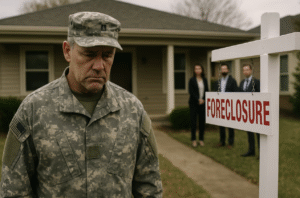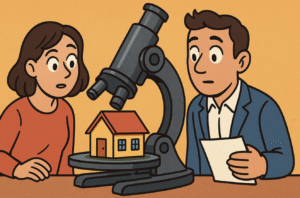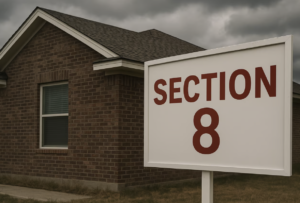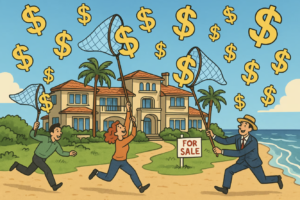|
|
|
|

Trust This.
By Joseph E. Seagle, Esq. ● Oct 04, 2024
Smart Brevity® count: 7.5 mins…1998 words
👋 Happy first Friday of October! Fall is here (?). It’s also World 😁 Smile 😀Day 😀 I’m flying back to Orlando today after a weeklong vacation in Palm Springs, CA, where daytime temps rarely fell below 105, setting record highs each day we were there.
Situation Awareness: The Eleventh Edition of Land Trusts in Florida is now shipping on Amazon. Go to www.landtrustbook.com today to get your copy.
Situation Awareness #2: The IRS has extended most tax deadlines, including those associated with 1031 Exchanges, for taxpayers adversely affected by the Hurricane Helene disaster declared by FEMA. First American Exchange has more information.
By the numbers: Last week’s poll results –
If you’re a landlord, do you accept pets?
-
Yes – Pet Fee below $100 = 44%
-
Yes – Pet Fee over $100 = 32%
-
No pets allowed = 24%
|
|
🏘 1 big thing: Eight States Now Have More Unsold Inventory Than in 2019

Eight states in the U.S. now have more unsold housing inventory than they did in 2019, signaling a shift towards more “normal” market conditions after years of pandemic-driven demand and price inflation. According to Altos Research, states like Florida, Texas, and Arizona are leading the way, with some regions seeing as much as 70% more homes available than last year.
Why It Matters:
-
For real estate professionals, this inventory surge offers both opportunities and challenges.
-
The increase in homes for sale may ease pressure on buyers in markets like Florida and Arizona, where demand outstripped supply for years.
-
With more homes on the market, seller competition is rising, which could lead to price corrections, particularly in areas with higher unsold inventory.
However, this shift is not uniform across the U.S. While southern and western states are experiencing significant inventory growth, the Midwest and Northeast still struggle with low inventory.
Impact on Business:
For agents and brokers in high-inventory states, the market is starting to favor buyers, so pricing strategies will become critical. Sellers may need to be more flexible in markets with higher taxes or insurance costs, like Texas and Florida, where rising ownership costs push more properties onto the market.
Meanwhile, developers in these areas should tread carefully.
-
Many states experiencing inventory growth have also seen high levels of new construction.
-
Builders could face a glut of unsold properties if migration slows or shifts, leading to further downward pressure on prices.
The Bottom Line: While the increase in unsold homes presents a more balanced market in some regions, real estate professionals should closely monitor local conditions. Price adjustments, buyer preferences, and shifting migration patterns will define success in this evolving landscape
|
|
2. Central Florida’s housing market is stabilizing

According to a recent Orlando Business Journal article (subscription required), Central Florida’s real estate market is entering a period of stabilization, with prices leveling off and inventory increasing after years of volatility. This shift is likely to have significant effects on real estate professionals in the region.
Why It Matters:
-
The Orlando housing market, after experiencing a frenzy of skyrocketing prices and dwindling inventory during the pandemic, is cooling off.
-
Median home prices have dipped from $395,000 in June to $390,000 in July, and inventory has grown by 3.4%, bringing the supply to 4.21 months.
-
This marks a move toward a more balanced market that should ease the pressure on both buyers and sellers, creating a more predictable business environment for real estate professionals.
The Big Picture:
-
With interest rates remaining high—averaging 6.6% for the year—the biggest challenge continues to be affordability for potential buyers.
-
Over 52% of agents say interest rates are the largest barrier to home purchases, according to a survey from the Orlando Regional Realtor Association.
-
However, a stabilizing market, coupled with a predicted rate cut by the Federal Reserve, could lead to a resurgence of activity, particularly for first-time buyers.
What’s Next:
-
Real estate agents in Central Florida must adapt to new commission disclosure rules following a $418 million settlement with the National Association of Realtors.
-
These changes require greater transparency, which may shift how professionals negotiate and conduct business.
-
Additionally, with inventory levels rising, agents should prepare for a more competitive environment where strategic marketing and pricing become crucial.
The Bottom Line: For Central Florida’s real estate sector, a stabilized market presents opportunities for more balanced transactions. However, agents will need to navigate both regulatory changes and fluctuating buyer sentiment, particularly in response to interest rate adjustments, to remain competitive.
|
|

The latest edition is available for ordering at www.landtrustbook.com
Go deeper: I discussed the book in this week’s “Ask Joe Anything” version of the Trust This podcast.
Listen in or watch on your favorite streaming platform.
|
|
3. Catch up fast

-
The Fed is in no hurry to lower its rate. MPAMag
-
Home sales are climbing on lower interest rates. HousingWire
-
Congress passes stopgap funding bill to keep government open, but fails to include disaster funds. E&E by Politico
-
Speaker Johnson says not to worry; the funds for FEMA to respond to Hurricane Helene are actually there. No need for Congress to re-convene ahead of the election. If needed, they can deal with it in a lame-duck session. The Hill
-
Hurricane Helene’s damages and losses are estimated to be between $34 billion and $160 billion (for perspective, that’s two-thirds of Elon Musk’s 2024 reported net worth) and between 200 and 600+ lives, depending on who is doing the estimating. Axios and The Highland County Press
|
|
4. Closing Thought – Country roads …
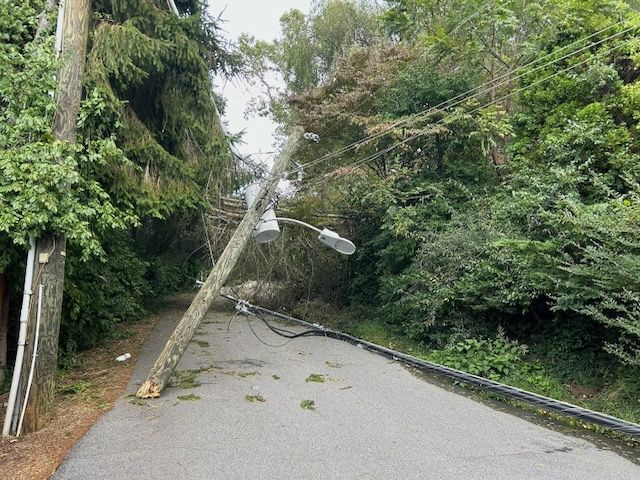
Winds snapped wooden utility poles like toothpicks on this street in our Asheville neighborhood. Photo by our neighbor, Amy.
A week ago, Hurricane Helene tore through the Florida Panhandle, Georgia, Western North Carolina, and Eastern Tennessee, carving a path of destruction that cost hundreds of lives and billions of dollars of property damage.
Why it matters: I have friends and family who live in Atlanta, Western North Carolina, and Eastern Tennessee.
-
My parents and many other relatives live in Marion, NC — my boyhood hometown.
-
My brother and sister-in law live in Cullowhee near Western Carolina University on the west side of Asheville.
-
My niece and her husband live in Sevierville, TN near Pigeon Forge and Gatlinburg.
-
We have a second home in Asheville (see last week’s picture in this part of the newsletter).
I was in Atlanta last Wednesday and saw Helene heading into a stormfront that had been drenching the entire area for two days.
-
Having lived through too many hurricanes, I looked around and quickly realized that Atlanta had no idea what was coming and was unprepared. I changed my flight from Friday evening to Thursday morning and flew out at 6:20 a.m. back to Orlando.
-
Even if the storm hit Orlando head-on, I was better prepared in my home there. I knew we could recover power, water, and other necessities sooner than they would in Atlanta.
Once back in Orlando, my attention turned to Asheville and the rest of WNC.
-
Anyone could see they were in the middle of the path of the storm and experiencing the same drenching rains that Atlanta was feeling.
-
I started warning my family to get prepared, but they couldn’t believe it would be that bad. They filled up their cars with gas and got some bread.
From Thursday night through Friday, I was unable to reach anyone in my family by cellphone or any data messaging apps. Finally, late Friday night and early Saturday morning, I was able to send short text messages to my 83-year-old dad.
-
They had no other communication with the outside world, so I started feeding him information with short text messages until 3:30 a.m. Saturday morning, when we were all too exhausted to go on.
-
After a few hours of sleep, I started texting again. I found what looked like an open route out of Marion and to the interstate and texted the directions.
-
Finally, when they realized the water would run out or be contaminated, they agreed it was time to leave.
-
After running into roads blocked with trees and power lines, Dad finally found a way to the interstate and headed to my aunt’s house in eastern Virginia, where they’ve been since.
Having gotten them out, I turned my attention to our Asheville neighbors, sharing information and updates with them. In ignorant bliss and denial, no one knew how bad it was or how long it would take.
-
They all thought it was just like any ice storm in the past and that power, water, and communications would be back in a few days at most.
-
As I was able to send them text messages, the reality of the situation sunk in. I was able to give them routes to the airport and points South, which they shared with others.
-
They were able to evacuate as well.
-
But some are still so trapped by washed-out roads, landslides, and downed trees that there’s no hope of getting out this week or maybe even for weeks to come.
As more aid and airlifts have arrived in the area, I’ve felt a little relief and the ability to cut back on my time spent trying to get information up to my contacts in the area.
-
A cousin has a plane, and I’ve connected them with agencies that are airlifting food and supplies into Asheville and Hickory for further distribution around WNC.
-
Other trapped friends are posting pictures of ready-to-eat meals (MREs) that the Army and National Guard have been dropping to them from helicopters.
The area of Western NC and Eastern TN alone affected by this storm is larger than the entire state of Massachusetts. Imagine if that entire state lost power, water, communications, and roads to evacuate or bring in assistance.
-
An Atlanta chemical plant fire forced 90,000 people to shelter in place.
-
There is no hope that water will be restored to all of Buncombe County and Asheville in the foreseeable future.
-
Power restoration and road clearing are happening with help from neighbors and those coming in from across the country and Canada, but it will be one of the largest infrastructure projects in history.
-
Asheville area friends have texted me that they’re seeing the National Guard and other agencies pulling bodies out of rivers and mudslides, so expect the death toll to increase.
The bottom line: I guess I just wanted everyone to know why I may be a little behind on work this week.
-
Secondly, I want to impress on everyone that — no matter how prepared we think we are for a disaster — it’s not enough.
-
I’d never considered losing connection to the Internet or cell service.
-
I’d never considered entire municipal water systems being destroyed and down for months.
-
I’d never considered interstate highways being covered in landslides or washed away by rivers, cutting off escape routes so that you’re physically stuck.
What’s next: We will revisit and update all of our disaster preparedness plans as a family and as a business yet again.
-
We will also focus on the emotions that stun us after such disasters and develop techniques for spurring ourselves, our friends, family, and co-workers into action.
-
If we continue to ignore emotional disaster preparedness, then denial, bargaining, sorrow, complaining, being overwhelmed, confused, and scared will continue to paralyze us at the most critical times before and after the disaster happens.
-
The sooner we “snap out of it,” the sooner we can focus on the reality of the situation and start healing.
|
|
|
We hope you found this helpful — any feedback is appreciated and can be shared by hitting reply or using the feedback feature below.
-
Was this email forwarded to you? Subscribe here.
-
Have an idea or issue to share? Email us.
-
Connect with us using your preferred social media and website links for MyLandTrustee and Aspire Legal Solutions.
-
Our mailing address: PO Box 547945, Orlando, FL 32854-7945
-
Our physical address: 1901 West Colonial Drive, First Floor, Orlando, FL 32804
Be on the lookout for our next issue! 👋
|
|
|
|
Feedback
Please share your thoughts on this edition.
Was this edition useful?
 

Your responses are anonymous
|
|
|
Powered by

|
|
|











